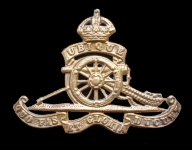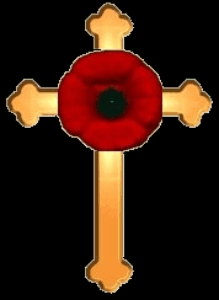|

1794766
Gunner
Harry Raymond Sigsworth

Royal Artillery
3 H.A.A. Regt.
Japanese POW
Captured Singapore
Transported to work on the Thailand-Burma Railway
Died
Age: 23
30th December 1943
Memorial
B6. G. 5.
THANBYUZAYAT WAR CEMETERY
Harold Sigsworth - Lest we forget
By
John Sigsworth
It is with honour and pride that together with the rest of my family, I attended a rededication ceremony at the magnificent war memorial in Scatchard Park in Morley on Sunday 29th June 2008. The reason - my uncle was finally added to the names of the fallen.
Harry Raymond Sigsworth, lived on Wide Lane Morley and attended schools on Peel Street and Bridge Street. He attended the Zion Chapel and worked on Marshal Street. He volunteered for service, eager to do his bit alongside his two brothers Jack and Roland, who were already serving in his majesties services.
Harry joined up in June 1941 with the Royal Artillery and after training was posted to Malaya. In January 1942 he wrote home in a cheery manner saying " don't worry, on a gun sight away from town in the wilds" he also sent a Christmas telegram stating best wishes for Christmas and the new year.
Japan entered the war on December 8th 1942 by invaded Malaya and attacking Pearl Harbour. Although the Allied troops in Malaya showed bravery and courage in their attempt to stop the Japanese from advancing through the Malayan mainland, the withdrawals final stage was to the supposed safety of the impregnable Island Fortress of Singapore.
The rearguard consisting of Australians, the Gordon's and the Argyll and Sutherland Highlanders, were the last to cross to the Island of Singapore. This was January 31st 1942, by February 9th the Japanese had gained a foothold on the Island and so began the atrocities committed by Japanese army.
The final surrender occurred on 15th February 1942, when 38496 British servicemen together with 18490 Australians, 67340 Indian and 14382 local volunteers with great reluctance laid down their arms and marched into captivity. It has been stated that all prisoners were held in contempt by the Japanese Military who regarded Captivity as the final degradation of the male spirit.
Harry being posted as missing in April of that year. By October 1943 the family received official confirmation that Harry had been interned as POW in a Thai Camp. Years of uncertainty followed culminating with official confirmation by the war office in May 1945 that Harry had died December 30th 1943.
The Japanese had decided to revive a project first thought of in 1885, a railway link between Thailand and Burma to supply their forces in Burma. The engineering difficulties were formidable, since the line had to cut through 260 miles of rugged country' of a region with one of the unhealthiest climates in the world. Construction began in October 1942.
In April 1943, 3400 British and 3600 Australians of ‘F’ and ‘H’ forces were marched to Singapore Railway station, to travel the 1200 miles overland to Thailand, 30 men were crammed into each steel truck, which were then closed and unventilated. After five days they arrived at Ban Pong, a station near Bangkok, this the point from which the new railway was to be started.
The prisoners were then marched 174 miles, slithering and stumbling through jungle mud for three weeks, finally reaching Nikki, a camp near three pagoda pass, between Thailand and Burma. Two thirds of these men died within a few months, victims of brutality, disease, malnutrition and sheer exhaustion. Underfed, debilitated prisoners worked through the rugged terrain of wild jungle in sweltering temperatures soaring to 100 degrees.
The railway camps consisted of bamboo atap huts, the roofs being covered by palm leaves. The Japanese seemed determined to complete the task of completing the railway irrespective of the cost of human lives.
Harry together with his comrades from these two forces found the treatment from the camp guards brutal with a harsh emphasis on speed of work. In the Autumn of 1943 Harry sadly contracted the body wasting 'beri beri' which was confirmed in a letter received in May of 1945 to the family, from a captain in the Norfolk Regiment. The letter outlined that poor food, lack of drugs and medicine had not been supplied by the Japanese, despite numerous requests. At the time of his death, Harry did receive a military funeral undertaken by his comrades in the camp.
Harry was one of 6318 British servicemen who died during the railways construction. When the railway was completed in October 1943, a mass transfer began and the death toll continued, 50.000 prisoners of war were transported to Taiwan, Korea and Japan. The survivors continued in forced labour working in Nickel and cola mines and foundries.
Japan surrendered 14th August 1945, when rescued; almost all parties of survivors were a pitiful sight, in shocking conditions. Emaciated, bare foot and clad in filthy rags, skeletons of men. After the war, it seemed that their suffering was to continue, although the physical scars were treated, the emotional mental scars were less easy to heal. Many could not discuss their experiences with wives and family, one survivor stated "not talking became a fixed habit, a way of shielding ourselves from those years". One survivor recounted how he only had one brief final medical examination but the mental anguish was not treated at all.
As the British public became aware of the horrors of the European concentration camp, the horrors of the Far East appeared to be overlooked. However, thankfully as memories fade, it is never completely forgotten held in diaries and drawings and letters.
Notable memorials to Far East prisoners of war exist at the church of St peter and Paul, Wisbech, Cambridgeshire. The sculpture symbolizes a rock face in a jungle clearing, the borders shaped as bamboo, the cross slightly out of shape, it tries to convey a sense of peace and serenity in memory of those who did not return.
The latest memorial is a 30 metre section of the actual railway, placed appropriately at the National memorial arboretum at Alrewas in Staffordshire, a lasting commemorative tribute.
After the war representatives of the war graves commission traveled the whole length of the railway, in search of rough cemeteries and bodies of the missing. They located 144 cemeteries, mostly track side graves in the jungle and over 10,000 bodies now all gathered together in three main war cemeteries. Gunner Harry Raymond Sigsworth lays not forgotten plot B6 row G grave 5. A simple bronze pack mounted on a concrete pedestal at Thanbyuzayat, Myanmar, Burma. Just one of the 3800 others tended in the care of the commonwealth war graves commission.
The Far East Prisoner of War Prayer
As we that are left grow old
With the years , remembering the heartaches, the pain and the tears
Hoping and praying that never again Will man, sink to such sorrow and shame
The price that was paid
We will always remember
Every day, every month
Not just in November
Amen
|